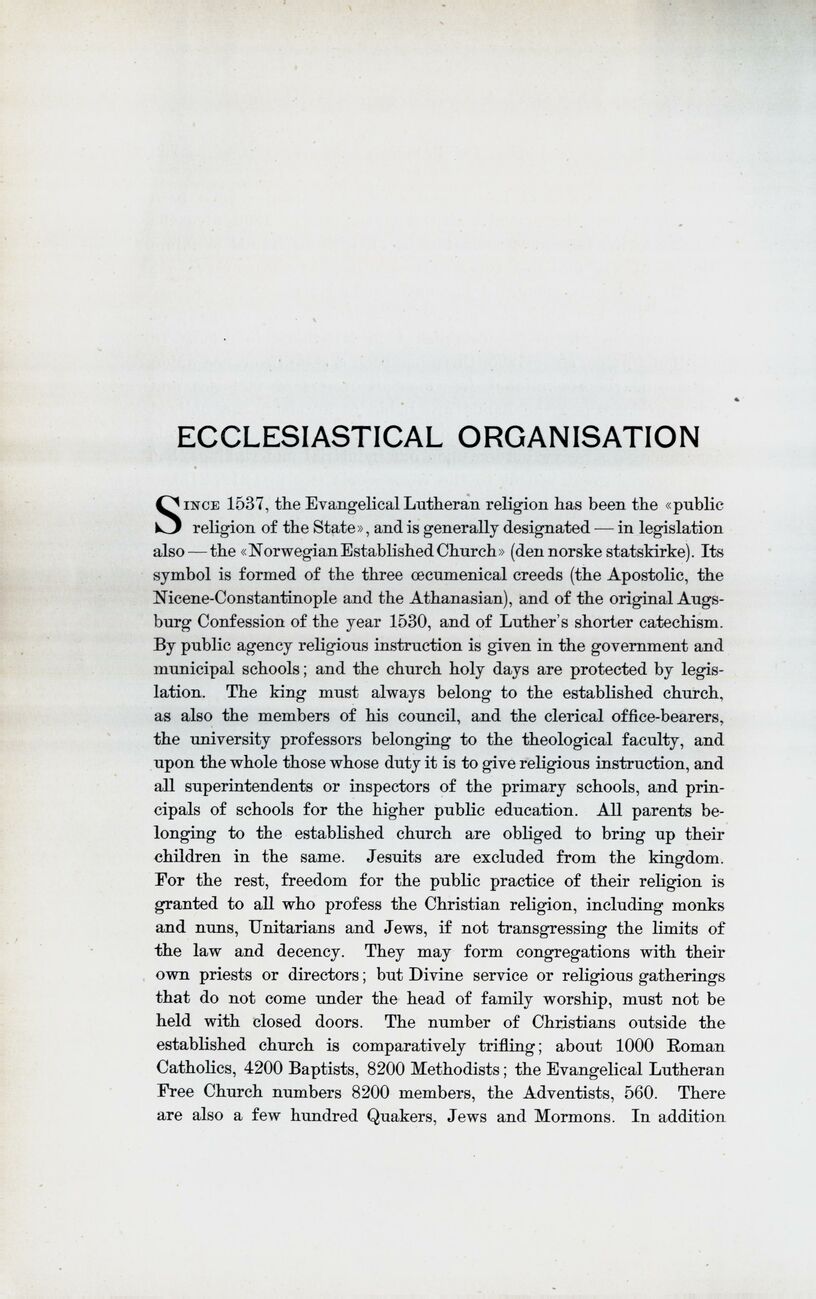
Full resolution (JPEG)
- On this page / på denna sida
- Ecclesiastical Organisation, by E. I. Hambro

<< prev. page << föreg. sida << >> nästa sida >> next page >>
Below is the raw OCR text
from the above scanned image.
Do you see an error? Proofread the page now!
Här nedan syns maskintolkade texten från faksimilbilden ovan.
Ser du något fel? Korrekturläs sidan nu!
This page has been proofread at least once.
(diff)
(history)
Denna sida har korrekturlästs minst en gång.
(skillnad)
(historik)
ECCLESIASTICAL ORGANISATION
Since 1537, the Evangelical Lutheran religion has been the «public
religion of the State», and is generally designated — in legislation
also — the «Norwegian Established Church» (den norske statskirke). Its
symbol is formed of the three œcumenical creeds (the Apostolic, the
Nicene-Constantinople and the Athanasian), and of the original
Augsburg Confession of the year 1530, and of Luther’s shorter catechism.
By public agency religious instruction is given in the government and
municipal schools; and the church holy days are protected by
legislation. The king must always belong to the established church,
as also the members of his council, and the clerical office-bearers,
the university professors belonging to the theological faculty, and
upon the whole those whose duty it is to give religious instruction, and
all superintendents or inspectors of the primary schools, and
principals of schools for the higher public education. All parents
belonging to the established church are obliged to bring up their
children in the same. Jesuits are excluded from the kingdom.
For the rest, freedom for the public practice of their religion is
granted to all who profess the Christian religion, including monks
and nuns, Unitarians and Jews, if not transgressing the limits of
the law and decency. They may form congregations with their
own priests or directors; but Divine service or religious gatherings
that do not come under the head of family worship, must not be
held with closed doors. The number of Christians outside the
established church is comparatively trifling; about 1000 Roman
Catholics, 4200 Baptists, 8200 Methodists; the Evangelical Lutheran
Free Church numbers 8200 members, the Adventists, 500. There
are also a few hundred Quakers, Jews and Mormons. In addition
<< prev. page << föreg. sida << >> nästa sida >> next page >>
Project Runeberg, Tue Mar 11 10:44:48 2025
(aronsson)
(diff)
(history)
(download)
<< Previous
Next >>
https://runeberg.org/norparis/0272.html



